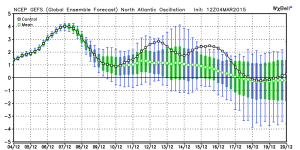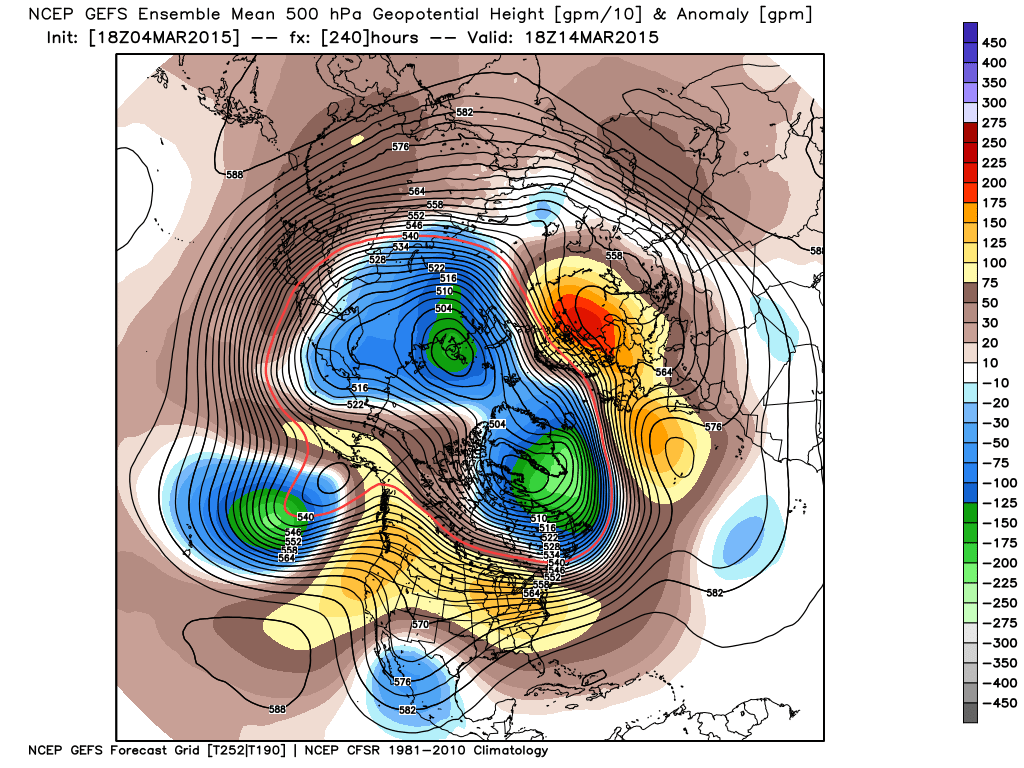After a long and cold winter, many are excited about hearing of the prospects of a warm up and first true taste of spring.
While the European data has totally bought in to the impressive “spring fling” next week, the GFS isn’t as excited of the potentially warmer times. Case in point, the GFS and European couldn’t be in more different camps for mid and late next week. Where the GFS has low/ mid 40s for highs the European has low/ mid 60s for highs. What’s 20 degrees amongst friends?!
Wild model swings and disagreements are common when pattern changes are taking place. While we might not get as warm as the Euro. would imply, it’s a safe bet we’ll be considerably warmer than the chilly GFS readings.
Note the AO and NAO strongly positive through the next 10-15 days. This is the time of the year when these teleconnections can impact our region’s weather in the most significant way. Both of these are warm signals taken at face value.
Note the pattern flip to a “flat” ridge by Day 10, indicative of the milder times ahead.
However, by Day 15 we notice the Alaskan ridge redeveloping. This is NOT a signal for warm weather across our part of the region, as the steering currents would tap available cold air and direct it south into the Mid West and Ohio Valley.
So, what do we take from this? We’re going to warm next week without question. While the extent of the warming is up for debate, the overall milder times for a 5-7 period is a good call at this point. On the flip side, we’re not ready to buy into the idea that spring is here for good just yet. The building Alaskan ridge by the end of Week 2 would imply a cold close to March, and potentially continuing into early April.
Another item to keep a close eye on the upcoming 4-6 weeks? Those NAO and AO signals. Should they remain predominately positive this time of year then it’ll be exceptionally challenging to get any sort of cold pattern to lock in for more than a day or two.





